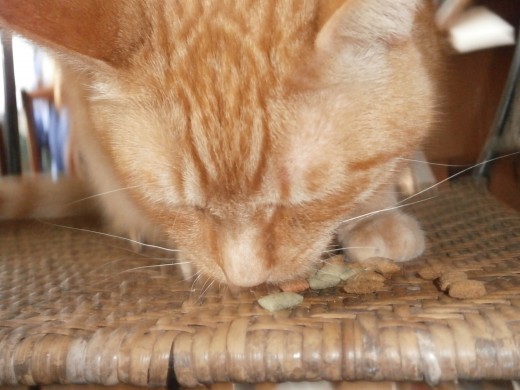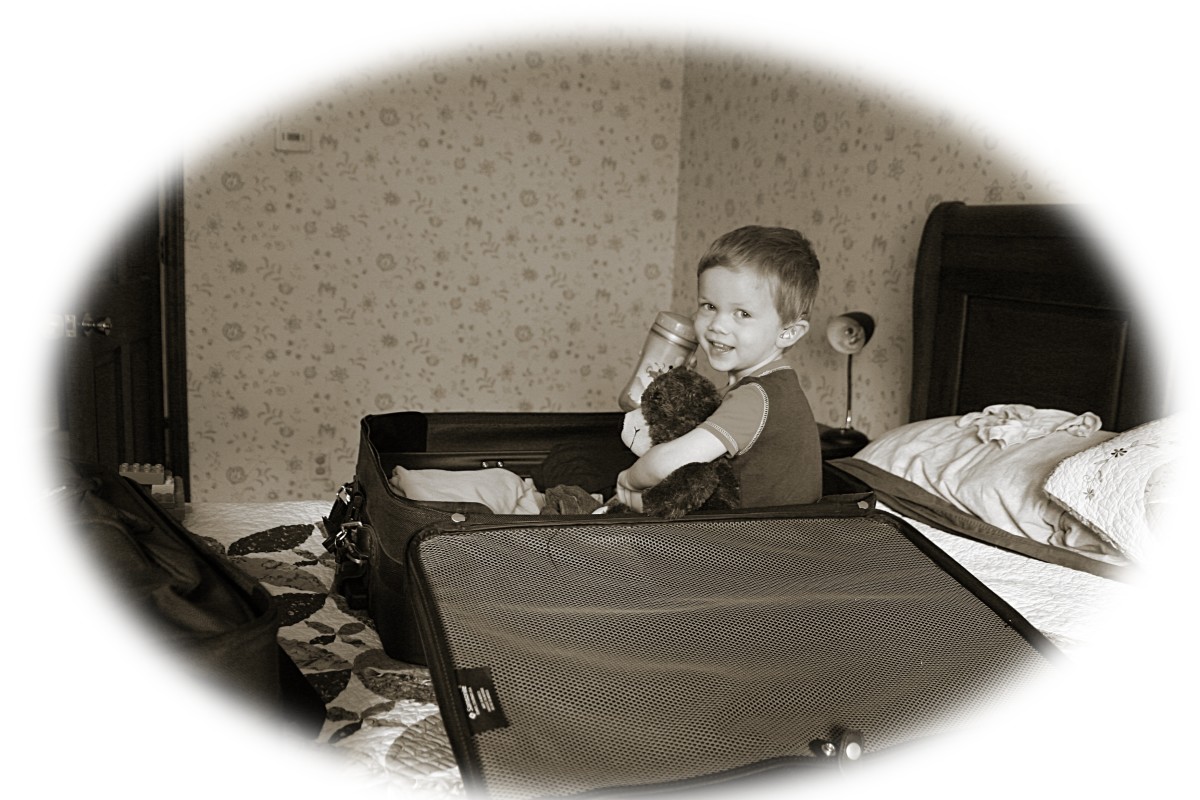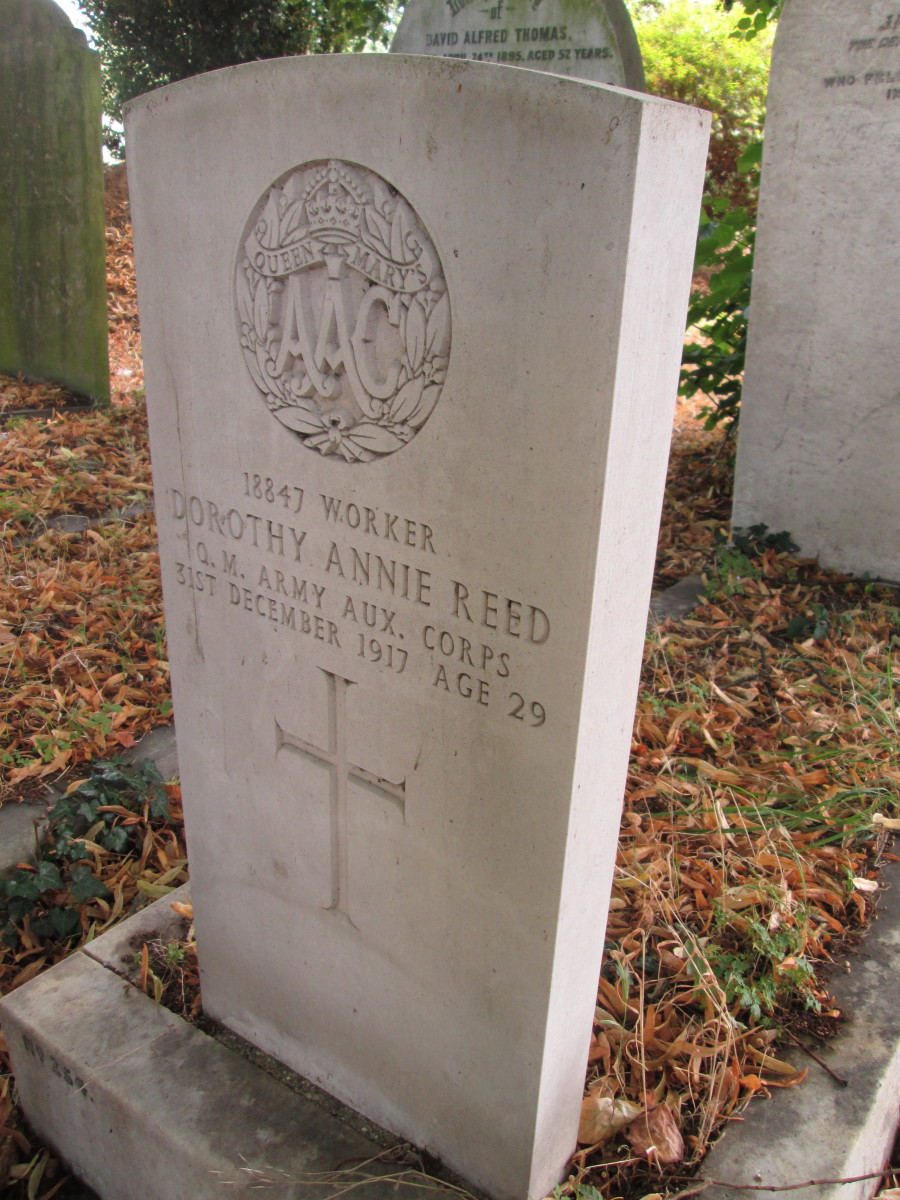Traveling With a Cat
Traveling With a Cat - Overview
Cats can be good traveling companions, though it is true that not all cats enjoy traveling. They are home bodies that prefer lounging on your favorite chair or lazing in a window, as opposed to being placed in a carrier under your seat on a jet plane.
Personally, I prefer to travel with my cat in a car, which makes it less stressful for both of us. I don't have to worry about my pet freezing in the underbelly of a plane or being lost by a baggage handler.
My travel companion is Awesome Louie, the co-author of A Cat Taught Me That: Life's Lessons Learned from Felines. He writes an advice column, Mewsings by Awesome Louie, for the love-lorn feline, as well as dispensing tips on proper etiquette for social situations.
Louie likes to travel as long as his primary needs are always met: fresh food, water, ample room to stretch, and of course his favorite treats. All of these things (give or take the treats) should be provided to your pet during any trip that lasts longer than an hour.
Awesome Louie the Twitter Cat
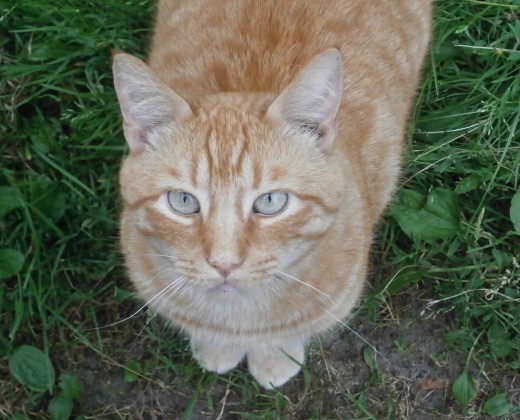
Travel Items for your Cat
Many pet owners begin traveling with their cat for a very simple reason, they have to figure out how to transport a cat to the veterinarian. Once you master this type of short-travel for your pet, the rest is gravy (at least that is what Louie thinks, especially if it is chicken-flavored gravy).
- Buy a pet carrier that is suitable for your cat. A hard-shell case is best if you will be traveling for an extended period of time in an auto, airplane or train. A hard case can protect your pet from being squashed by other luggage, as well as giving them some protection if there is an accident. Measure your cat when they are in a loaf position (tip of nose to base of tail), as well as their girth if they are a portly cat. Use these measurements when you go to buy your pet carrier to avoid buying one that is too small.
- A leash and collar is a must, as well as identification tags for the collar. It is much easier to capture an animal that has gotten loose if they are wearing their collar, and perhaps dragging a leash behind them. Personally, I prefer a combination of a collar and a harness in the off chance that my cat slips his collar. I also write my home phone number on the inside of his collar and harness with a Sharpie pen in case he loses his tags.
- Blankets and/or puppy pads. Depending upon the length of the trip, I like to give my cats something warm and soft to snuggle with, as well as an absorbent pad should they have an accident. Cats seem to enjoy fleece blankets to snuggle with. I've found that puppy pads (for dog accidents) work very well inside of a pet carrier, especially with first-timer cat travelers who may urinate because they are afraid. Trust me, you don't want to have to clean up cat urine in your vehicle as the smell is very hard to eliminate.
- Pet food, water, and treats. It is fairly simple to travel with an adequate amount of food, water, and treats for a cat. I bring along two small bowls, one for food, and one for water, a bottle of water, a small plastic zippered bag of dry food, a snack bag with his treats, and depending on the length of his journey, a few cans of moist food. If we're just making a trip to the vet, I bring along a few treats to give afterwards to reward them for being brave kitties.
Cat Travel Poll
Have you traveled with your cat?
The Anxious Cat Exception
Over the years I've owned dozens of cats, and a few have taken exception to being transported anywhere, especially to the vet. There are several ways to transport them that don't include cramming them into a pet carrier, which is often the main problem.
- Transport them in a large, clear plastic tub with lid. The lid should have air-holes drilled into it so that the cat has adequate air circulation. I've had several quasi-ferral cats that would never in a million years go into a pet carrier, and this has worked well for them. They can see everything around them, they have plenty of room to turn around, which seems to reduce their stress greatly. I also use bungee cords to keep the lid on, just in case.
- Travel with a handler for the pet. It is dangerous to have an animal loose in your car, especially if you are driving alone. They can try to escape out a window or open door, get under your seat, and potentially become tangled up in your brakes or accelerator. On the few occasions I've had cats that don't like to travel in a tub or cat carrier, I've brought along someone to hold them in the back seat of the car while they are wearing a collar, harness and leash. Sometimes having someone pet them and talk to them while traveling helps to reduce their stress. The down side- they may urinate in your vehicle if you don't put something on the floor for them to use. Try placing puppy pads or a small cat box on the floor in the back seat or luggage compartment of your vehicle so you're prepared for any eventuality.
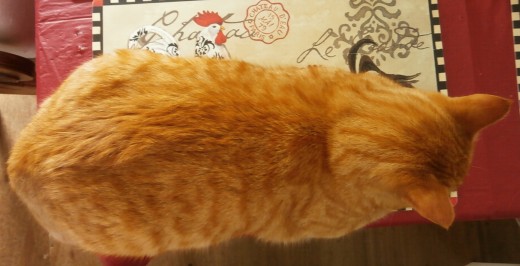
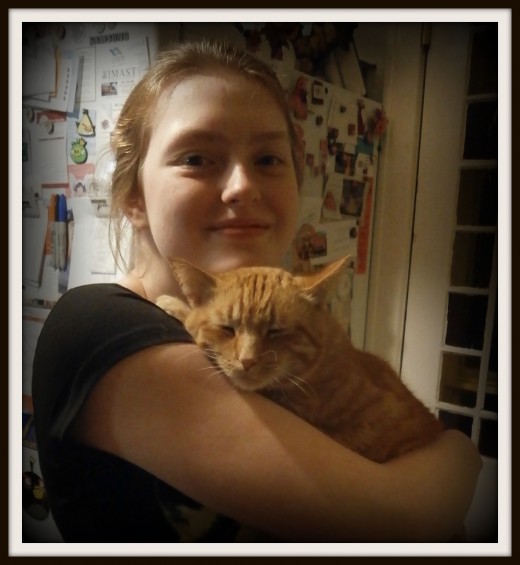
Airline Travel
Before you have your pet join you in an adventure requiring airline travel remember this: cats don't know that you are on vacation, and they won't get as much out of a trip as you will. Leave them at home whenever possible so that their lives remain stress free. They like their little daily routines, even if you aren't there. Hire a trusted neighbor to care for them or place them in a kennel instead of taking them on an airplane, if possible.
If you are still reading this section you've obviously decided to take your cat with you on an airline, probably because you are moving or are going somewhere for an extended period of time. If this is the case, here are a few things you need to be aware of:
- Try to keep your pet with you under the seat, not in the underbelly of the plane. Call the airline and find this out before you board. It is very cold in the underbelly of a plane, and many pets simply succumb to hypothermia in there. Also know that your cat will have to stay in their carrier under your seat for the duration of the trip. You will be allowed to feed and water them, however, as long as they don't leave the carrier.
- Keep a copy of your cats vaccination and health records with you, especially if you are traveling internationally. All of their health records must be up to date, and it is important to have a document with your vet's contact information as well, just in case the authorities wish to ask a question of your vet. Some countries require that animals coming in be quarantined for a specific period of time upon arrival, so make inquiries with your airline ahead of time to avoid surprises.
- Be sure that your pet carrier meets the size standard for airline travel. Call your airline ahead of time to be sure that it will fit under the seat. With airlines constantly changing seat configurations and reducing room for coach passengers, this is especially important for the comfort of you and your cat.
- Write your name and phone number in large text on the top of the pet carrier with a Sharpie pen. This is a quick way to help you, and others, identify your pet in the event that you are separated from each other.
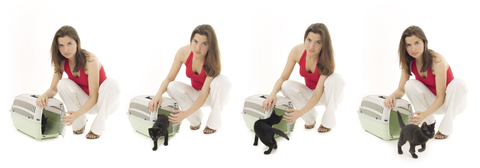
Get Ready to Travel by Practicing
One last tip that Louie and I would like to share with you for newbie travelers: get ready for travel by "practicing." Louie was an adult "rescue", and apparently hadn't traveled much, if at all, prior to his adoption. In order to get him comfortable with the idea, we practiced first.
One way to make a cat feel more comfortable with a cat carrier is to let them investigate it for several days before the big event. Put their favorite blanket in the carrier, along with favorite toys or treats, and let them sniff and explore all day long.
Let them wear their collar and harness for a little while every day before they travel. Some cats hate harnesses, but if you give them time to adjust to this new thing at their own pace, they may learn to completely ignore it.
After they've had a chance to get used to a new collar, harness, and carrier, it is time to go for short trips in the car. Drive around the block a few times, go to the park and sit, practice feeding them while they are in the carrier. All of these things will help your pet feel comfortable and safe because they will learn what to expect. Half of the battle is gaining trust on these little outings.
Always reward your cat after these outings, and play with them a little too. They will begin to look forward to these outings if they learn that they will be rewarded each time with love and attention from you.
